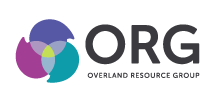WANT EXCEPTIONAL, SUSTAINABLE EMPLOYEE PERFORMANCE? OF COURSE, YOU DO!
We’ve identified seven actions (levers) to help you improve satisfaction, increase engagement, and intensify commitment—the key factors that drive performance. In this post, we’ll look at the first two levers that impact employee satisfaction.
As a leader, you have the opportunity (and responsibility) to create an environment that makes true employee commitment possible. Perhaps this thought is exciting but a bit overwhelming. Where do you begin?
We’re so glad you asked.
Your intentional focus and continued diligence in three areas can make all the difference. Employee performance is influenced by 1) satisfaction, 2) engagement, and 3) commitment.

A dedicated effort to examine and improve these areas can encourage a culture of contagious energy and loyalty. This is the stuff your leadership dreams are made of—the proven prescription that inspires employees to go above and beyond expectations.
The first step to achieving this exceptional performance is to boost employee satisfaction by leveraging your influence in positive ways.
HOW CAN YOU INFLUENCE EMPLOYEE SATISFACTION?
Understanding and demonstrating a genuine interest in how your employees think and feel is critical. Fairness is an issue that employee surveys have revealed to be an important consideration.
To explore this further, let’s dive into the first two levers of influence that can impact the way employees perceive their working conditions.
LEVER 1: PROCESS FAIRNESS
GOAL: Your employees need to perceive that policies and procedures are transparent, fair, and just, so corporate strategy must be clearly communicated to all employees.
SOME BEST PRACTICES:
-
Practice financial transparency. Because many workers value integrity as a top attribute of corporate leaders, more companies are increasing their transparency. This also includes the leadership recognizing shared financial stakes in business performance. Forbes highlights a survey that discovered 25% of privately held companies say they share financial information with all of their employees—that’s up from just 7% only four years ago.
-
Respect personal dignity. Not many people would argue with this. Yet few managers receive any guidance on how to uphold or lead with dignity in their workplaces on a daily basis. It involves recognition and trust as well as autonomy and self-mastery.
-
Clarify the role employees have in supporting the company. While it’s imperative that employees understand their job objectives in specific, quantifiable, and bounded terms, it’s also important that they grasp how their role supports the company overall. This helps every employee to know they can be valuable contributors at both a micro and macro level.
-
Ensure that rules and regulations are unambiguous and understood. Make sure rules are reasonably related to business efficiency and performance expectations.
LEVER 2: OUTCOME FAIRNESS
GOAL: Your employees need to perceive that their organization distributes rewards, resources, disciplinary action, and opportunities consistently, fairly, and appropriately.
SOME BEST PRACTICES:
-
Take on difficult conversations and encourage other leaders to do the same. This includes appropriate and beneficial feedback. The key to positive and sustainable personal and professional development is creating a reciprocal process. Coaching through providing and receiving helpful feedback is a foundational practice for those seeking improvement.
-
Stay involved in policy development and implementation. When you’re fully invested and acutely aware, you can ensure—and teach others to ensure—that consistent, fair, and equitable policies and procedures are created and upheld.
-
Make sure rewards fit the accomplishment and discipline fits the infraction. In regards to rewards, Harvard Business School reports that more than 80 percent of companies dole out work-related awards like "employee of the month" or "top salesperson." The HBS article, How to Demotivate Your Best Employees, says:
Managers often view these awards as inexpensive ways to improve worker performance; many believe that when employees bask in the glow of corporate praise, they may even feel motivated to work harder over the long term. But new research suggests that some awards may actually have the opposite effect.
Here are some insightful tips for how to reward your employees.
On the flip side, when a rule is broken or a problem is caused, communication is key, and feedback and instruction are paramount. There are ways to positively redirect behavior that prompts a commitment to change.
- Create policies that are transparent and open to appeal. In the article, 4 Ways to Instill and Promote Transparency in a Workplace, Sam Hodges, the Co-Founder and U.S. Managing Director of Funding Circle, writes:
Transparency matters for a company’s culture, because it builds trust and stronger relationships between employees and management. Keeping everyone in the loop regarding organizational changes, policy updates, and more leads to effective collaboration and shared learning, greater creativity, faster problem-solving and ultimately improved performance.
This is a good reminder that being transparent and open to feedback, though sometimes inconvenience or time consuming, is an undeniable benefit to employees.
-
Ensure equitable distribution of compensation and rewards. People often think of compensation as a boost in salary or cash bonus. However, employee compensation includes every aspect of employee benefits. This includes health benefits, retirement benefits, tuition reimbursement, bonuses, and all other non-salary benefits.
The bottom line is this: Employees need to perceive that they are being compensated fairly by their organization. When this occurs, their satisfaction improves—an essential next step to gaining greater engagement.
THE NEXT STEPS ARE ENGAGEMENT AND COMMITMENT.
Once you’ve started working to improve employee satisfaction, you’ll be on the path to success. But don’t stop yet—there are two more steps to take that include five more levers. We’ll be learning about these in part 2 and part 3 of this blog series, so keep using your levers to increase employee satisfaction, and stay tuned for more.
Hint: If you’re in the zone now and don’t want to wait, you can peek ahead by downloading our 7 Levers of Sustainable Performance PDF.
Download our free best practice guide to discover all 7 levers that lead to sustainable performance.
Still hungry for info? Check out these transformational insights.
- Working Together—Not Against
- The Secret Science Behind Great Teams
- An Open Letter to Leaders Who Don’t Believe in Engagement Surveys
- Want Engaged Employees? Start with Fairness.
When the way you’re working isn’t working, ORG can help. By fostering collaboration, boosting engagement, aligning goals, and implementing sustainable change, we can increase performance by two to three times your current goal—or more. Ready to work together?



